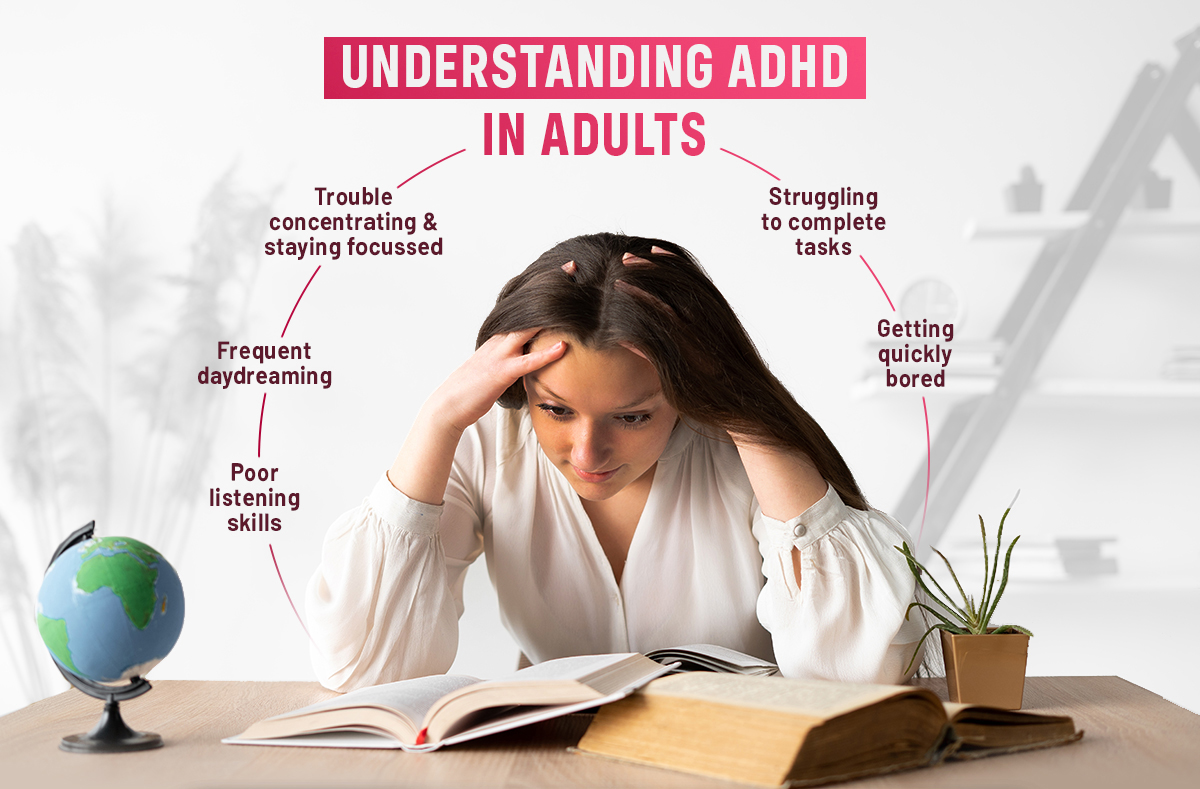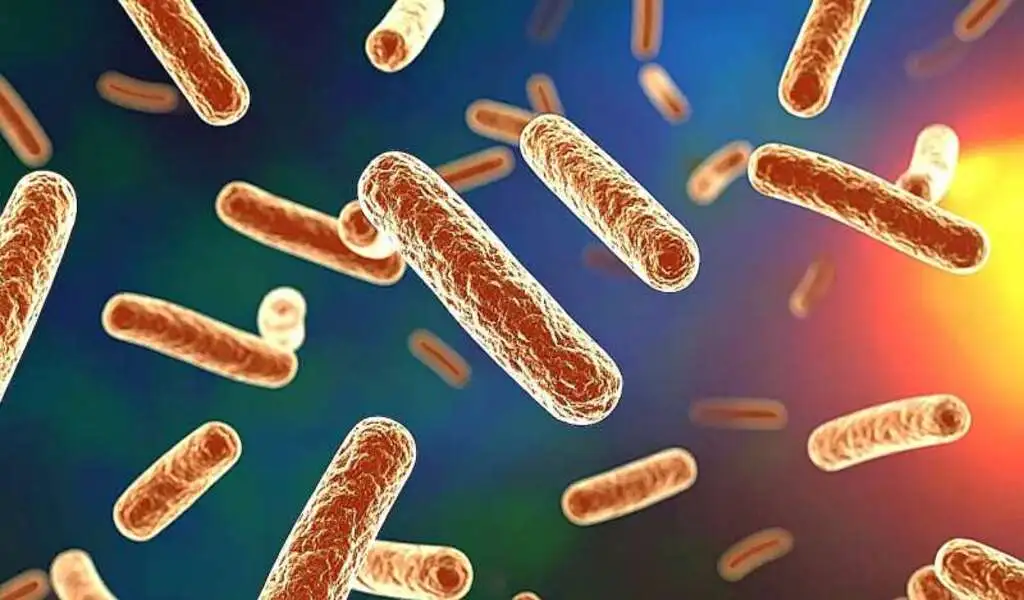Health
ADHD in Adults: How to Improve Quality of Life? Self Help Tips

If you have ADHD and want to improve your quality of life, this guide can help. See the best review (2024) of self-help tips and tricks for adults with ADHD.
Does forgetting appointments, losing keys constantly, or feeling overwhelmed by everyday tasks sound familiar? You might be wondering if these struggles are simply due to forgetfulness or a busy life. But for many adults, they could be signs of attention deficit hyperactivity disorder (ADHD). This article sheds light on what ADHD is, its symptoms, and how it can affect daily routines. It also reveals various treatment options and provides practical ADHD tips for adults looking to improve their quality of life. Read on.
What Is ADHD?
Attention-deficit hyperactivity disorder (ADHD) is a common neurodevelopmental disorder that affects millions of adults worldwide. It’s characterized by differences in brain function and development that affect a person’s ability to focus, regulate their emotions, and control impulsive behaviours [1].
While the exact causes of this disorder are not fully understood, research suggests that it may stem from a combination of both genetic and environmental factors. Many people who have ADHD do not know they have it – they just notice that everyday tasks are challenging. They often think that they are lazy, unintelligent, or lack self-discipline, which can affect their self-esteem and overall mental health. However, it’s important to be able to distinguish the disorder from simply being forgetful or disorganized, as identifying and understanding it is the first step in managing its effects.
Symptoms and Causes of ADHD in Adults
People often mistake the real symptoms of ADHD, which affect productivity, for simply a lack of effort or motivation. But in reality, the associated challenges are typically a result of an underlying difference in brain function. To be able to distinguish ADHD from general forgetfulness, being disorganized, and/or unmotivated and understand its symptoms, it’s important to first clarify what the condition is not.
ADHD is not:
- A character flaw: People with ADHD are not lazy or unmotivated. They often struggle with intense internal battles to stay focused and complete tasks;
- completely outgrown in adulthood: While some symptoms of ADHD may lessen with age, the main challenges often persist well into adulthood;
- a sign of low intelligence: Many adults with ADHD are highly intelligent and creative individuals. However, their challenges with focus and staying organized can make it difficult for them to showcase their abilities.
Generally, adults with this neurodevelopmental disorder can experience a wide range of symptoms, which typically fall under inattention, hyperactivity, or impulsivity [2].
Inattention:
- Difficulty completing tasks, especially those that require sustained focus. Starting a project might be easy, but completing it often proves incredibly challenging.
- difficulty organizing and prioritizing tasks, which often leads to a feeling of being overwhelmed;
- frequent forgetfulness, forgetting deadlines, appointments, or even conversations;
- daydreaming frequently, losing track of time while engaged in mundane tasks;
- easily distracted by internal thoughts or external factors, making it difficult to follow conversations or instructions.
Hyperactivity-Impulsivity:
- internal restlessness, a constant feeling of being on edge or weird, even when outwardly appearing calm;
- restlessness and unable to sit still for extended periods, even in situations that demand it;
- difficult resisting temptations, such as impulsive online shopping sprees or snacking;
- interrupting others while they’re speaking, difficulty waiting for your turn;
- poor planning, hot temper, and trouble coping with stress.
It’s worth noting that the effects of ADHD can vary from individual to individual, with each person experiencing different degrees of severity. Some adults may experience more of the symptoms that fall under inattentiveness, while others might struggle more with hyperactivity or impulsivity. Overall, these symptoms may lead to challenges in various areas of life, including work, personal well-being, and relationships.
Causes of ADHD in Adults
The exact causes of this disease are still being researched, but many researchers believe it results from a combination of environmental, genetic, and neurological factors, such as abnormalities in brain structure and function, particularly in areas related to attention, impulse control. The reason scientists believe genetics plays a significant role is that it has been found to run in families. What’s more, in terms of environmental factors, it’s believed that exposure to toxins such as second-hand smoke or lead during childhood or pregnancy might contribute to the development of ADHD [3][4].
Regardless of the specific causes, understanding the symptoms and causes of ADHD is important, as it can help in recognizing the disorder and seeking appropriate treatment and support.
How Does ADHD Affect Daily Life?
When poorly managed, ADHD can lead to stress and frustration. It can also have an impact on a person’s life, including their work, relationships, and overall well-being. Here is a closer look at some common struggles individuals with ADHD face [5]. Relationships: The symptoms of ADHD, such as impulsivity and inattentiveness, can strain personal relationships. Miscommunications can occur when someone with the disorder needs to remember details of conversations or has difficulty focusing during discussions. Forgotten commitments, like birthdays or anniversaries, can lead to feelings of hurt or disappointment. This is not to mention that difficulty managing responsibilities at home, such as errands or chores, can create tension with partners and family members.
- Work and productivity: ADHD can impact work performance and productivity. It causes difficulty focusing on tasks, which can lead to errors, missed deadlines, and an overwhelming feeling of underachievement. The difficulty associated with time management can make it difficult to plan projects, stay organized, and meet deadlines. Also, impulsivity can make individuals with the disorder interrupt others in meetings or make hasty decisions that might not be well-considered.
- Education: Excelling academically can be demanding for students with ADHD. Information overload can occur during lectures, making it difficult to concentrate and retain information. Organizational difficulties can also present challenges, as keeping track of assignments, textbooks, and deadlines can feel overwhelming. These struggles can contribute to a sense of frustration and underachievement in academic settings.
- Emotional well-being: The constant battle to manage ADHD can take a toll on emotional well-being. Feeling overwhelmed by daily tasks, work deadlines, and relationships can lead to increased stress and anxiety. These factors, combined with the difficulty of completing tasks and meeting expectations, can contribute to feelings of inadequacy and low self-esteem.
It’s worth noting that ADHD manifests differently in each individual and, as a result, might affect their daily lives in varying ways. However, understanding the possible ways it can affect day-to-day activities is an important first step in seeking professional help, following strategies to improve the quality of life.
What Treatments Are There for ADHD in Adults?
While there is no cure for ADHD, there are several treatment options that can help improve symptoms and enable people living with it to manage the condition effectively. Here are some of the available treatment options [2]:
Medications
Stimulant medications, such as methylphenidate (Ritalin) and amphetamines (Adderall), are commonly prescribed to manage ADHD symptoms. These medications work by increasing the levels of certain neurotransmitters in the brain, which help improve focus and reduce impulsivity and hyperactivity. Non-stimulant medications, such as atomoxetine (Strattera) and guanfacine (Intuniv), are also available and may be suitable for individuals who do not respond well to stimulants or experience side effects.
Sometimes, doctors prescribe modafinil off-label to manage the symptoms because of its effectiveness and high level of safety. While it provides stimulant-like effects, it has relatively fewer side effects and a much lower potential for addiction. Note that it is important to only buy meds from reputable and trustworthy vendors such as Modafinil USA, which has a proven track record of selling quality meds and satisfying customers with their services. This will help ensure you receive genuine medications and avoid potential health risks associated with counterfeit products.
Therapy
CCognitive-behaviouraltherapy therapy (CBT) is an effective treatment for ADHD in adults. CBT helps individuals develop skills to manage their symptoms, such as time management, organization, and problem-solving strategies. They can also address emotional issues related to ADHD, such as anxiety and depression.
Combination Therapy
This is a combination of medication with therapy to manage the symptoms of ADHD. This treatment approach is often the most effective, as it caters to both the physical and psychological symptoms. While medications help address most symptoms, such as inattention and hyperactivity, therapy provides support for emotional and behavioural changes.
Lifestyle Changes
Making certain lifestyle changes can help manage ADHD symptoms. Engaging in regular exercise, eating healthy, and getting enough sleep is important for overall brain health, and if consistently practiced, they can improve focus, mood, and overall cognitive function. What’s more, creating a structured routine and minimizing distractions can help individuals with ADHD stay organized and on track.
How to Self-Care for Adults with ADHD?
Living with ADHD can make life feel like a suspended state of juggling between activities. Between work, relationships, and personal well-being, it’s easy to feel overwhelmed. But the good news is that there are many ADHD self-help techniques you can incorporate into your routine to manage your ADHD and improve your quality of life. Here are some practical strategies, including work and study tips and tricks:
Stress Management
Living with ADHD can be stressful. Develop healthy coping mechanisms to manage stress, such as deep breathing exercises and yoga. Spending time in nature is also an effective way to relieve stress, as it provides a calming environment that can help clear your mind and improve your mood. Writing can also be a great stress relief. Incorporate writing into your routine and look for writing tips to help express your thoughts and feelings more effectively. Consider mindfulness meditation to help increase your awareness and control over your thoughts and actions.
Sleep Hygiene
Prioritize good sleep habits. Create a regular sleep schedule and a relaxing bedtime routine, and ensure your bedroom environment is dark, quiet, and cool. Avoid screens before bedtime and consider reading a book or listening to calming music to help you wind down. Use apps such as the Rise Sleep App for sleep tips and personalized recommendations to improve your sleep quality.
Create a Supportive Work Environment
Designate a specific workspace that’s free from clutter and distractions. Use organizers, folders, and whiteboards to keep important things within easy reach and visually stimulating. Making your workspace clean and orderly can help you maintain focus and improve productivity. You can customize your environment to suit your needs, whether that means using colored folders, labels, or a particular layout that enhances your workflow. Feel free to search online for some cleaning tips to help declutter and improve your work environment.
Organization Tools
Today, there’s an app for (almost) everything! Leveraging technology where it is possible to simplify your workload and boost your efficiency and overall productivity is one of the best organizational tips. Use timers, productivity apps, and noise-cancelling headphones to create a supportive environment that minimizes distractions and promotes focus. Invest in planners, calendars, and to-do list apps to keep track of tasks, appointments, and deadlines. Setting reminders and breaking tasks into smaller, manageable steps can also be very helpful.
Exercise and Eat Healthy
Exercising regularly and eating healthy can improve ADHD symptoms by improving concentration, mood, memory, and motivation. Aim for at least 30 minutes of moderate exercise most days of the week. Choose activities you enjoy to make it easier to stitch with them. What’s more, maintain a balanced diet rich in fruits, whole grains, vegetables, and lean proteins. Avoid excessive sugar and caffeine, as they can exacerbate symptoms.
Supplements and Vitamins for ADHD
While not a cure, some vitamins and supplements, such as vitamin D, B-complex vitamins, and fish oil, may offer some benefits for managing ADHD symptoms. These supplements can support brain health and improve overall cognitive function. However, it’s important to consult with a healthcare provider before starting a new supplement regimen to ensure they are appropriate for you and won’t interact with other medications you may be taking.
When to Ask for Help?
While self-help strategies can be effective, there are times when professional help is necessary. If ADHD symptoms are seriously affecting your daily life, relationships, or performance at work, it may be time to seek help from a healthcare provider. A mental health professional can provide a comprehensive evaluation, diagnose ADHD, and develop a tailored treatment plan that may include medication, therapy, or both.
What’s more, if you experience severe emotional distress, such as depression or anxiety, it is important to seek help for ADHD in adults. These conditions often occur alongside ADHD and can make it more difficult to manage. Seek support from a counsellor or therapist, as it can help provide the much-needed emotional support to achieve an improved quality of life.
Support groups and online communities can also offer free help in the form of both practical and emotional support. Many find this type of support effective, as it comes from others who understand the challenges of living with ADHD. Remember that seeking help is a sign of strength and a bold first step towards improving your quality of life.
Conclusion
No doubt, living with ADHD as an adult is difficult, but with the right support, it’s possible to lead a fulfilling and productive life. Understanding the disorder, recognizing its symptoms, and seeking appropriate treatment are all important steps that must be taken to improve your quality of life. Remember that it is important to ask for help as soon as you suspect you might have ADHD. Also, don’t hesitate to connect with resources that can provide support and guidance. Always remember that with the right approach, adults with ADHD can improve their symptoms and achieve their goals.
References
- ADHD: Symptoms, Types, Testing, and Treatment. Written by WebMD Editorial Contributors. Medically reviewed by Zilpah Sheikh, MD. Retrieved: May 23, 2024. Webmd.com.
- Adult attention-deficit/hyperactivity disorder (ADHD). Retrieved: May 23, 2024. Mayoclinic.com.
- Attention deficit hyperactivity disorder (ADHD) – Causes. Retrieved: May 23, 2024. Nhs.uk.
- ADHD Lifestyle Changes That Improve Symptoms. By Joel Nigg, Ph.D. Retrieved: May 23, 2024. Additudemag.com.
- ADHD Affects All Areas of Life: A Whole-Person Condition. By Linda Roggli, PCC. Retrieved: May 23, 2024. Additudemag.com.
SEE ALSO:
What Is Alevemente? Exploring Its Use, Guide, and The Benefits
Wellhealthorganic Home Remedies Tags: Easy Steps to Unlocking Natural Wellness
Health
Clogged ‘Drains’ in the Brain Could Be Early Alzheimer’s Warning Signs

SINGAPORE – “Drains” in the brain that clear away toxic waste appear to get blocked in people who show early signs of Alzheimer’s disease, according to new research from Nanyang Technological University, Singapore (NTU Singapore).
These blocked brain drains, known as enlarged perivascular spaces, seem to act as an early warning sign for Alzheimer’s, which is the most common type of dementia.
Associate Professor Nagaendran Kandiah from NTU’s Lee Kong Chian School of Medicine (LKCMedicine), who led the study, explained that these changes can be picked up on routine MRI (magnetic resonance imaging) brain scans used to investigate memory or thinking problems. Because of this, spotting enlarged perivascular spaces could support current methods of detecting Alzheimer’s at an earlier stage, without needing extra tests that cost more time and money.
Justin Ong, a fifth-year LKCMedicine student and the study’s first author, shared that early detection of Alzheimer’s helps doctors act sooner to slow worsening symptoms. These symptoms include memory loss, slower thinking, reduced concentration, and changes in mood or behaviour. The project was carried out as part of LKCMedicine’s Scholarly Project module in the Bachelor of Medicine and Bachelor of Surgery programme.
The work also stands out because it focuses on Asian participants. Most dementia studies so far have centred on Caucasian groups. In this research, the team studied almost 1,000 people in Singapore, across ethnic groups that reflect the local population. They compared people with normal cognitive function and those with mild thinking or memory problems.
Research on Asian populations is important because past studies suggest that dementia can present differently in different ethnic groups.
Assoc Prof Kandiah, who also serves as Director of the Dementia Research Centre (Singapore) at LKCMedicine, pointed out one example. Among Caucasian patients with dementia, past data show that between 50 and 60 per cent have a major risk gene, apolipoprotein E4, which is linked to Alzheimer’s.
In contrast, less than 20 per cent of dementia patients in Singapore carry this gene. This means that patterns seen in Caucasian patients might not apply directly to Asian patients, and the reverse is also true.
Spotting Alzheimer’s before symptoms worsen
Blood vessels in the brain sit within small fluid-filled gaps called perivascular spaces. These spaces act like channels that allow toxic waste products to drain away. These waste products include beta amyloid and tau proteins, which build up in large amounts in the brains of people with Alzheimer’s disease.
When this waste clearance system does not work properly, the perivascular spaces can become clogged and enlarge. These enlarged perivascular spaces are visible on MRI scans. Until now, it was not clear how strongly this condition was linked to dementia, especially Alzheimer’s disease.
The NTU team set out to improve on earlier studies by comparing these blocked brain drains with a wider set of biological signs of Alzheimer’s. They examined how enlarged perivascular spaces matched up with key Alzheimer’s markers, such as beta amyloid protein build-up and damage to the brain’s white matter. White matter is the network of nerve fibres that connects different brain regions and helps them communicate.
The researchers studied close to 1,000 people in Singapore. Around 350 participants had no cognitive problems, meaning their thinking, memory, decision making, and focus were normal.
The remaining participants had mild cognitive issues that may signal the early stages of disease, including mild cognitive impairment. Mild cognitive impairment is a recognised stage that comes before full-blown dementia. Past research shows that people with mild cognitive impairment have a higher chance of later developing conditions such as Alzheimer’s disease and vascular dementia, a type of dementia caused by reduced blood flow in the brain.
For this study, the team reviewed MRI scans from all participants. They found that people with mild cognitive impairment were more likely to have enlarged perivascular spaces, in other words, clogged brain drains, compared with those who had no cognitive problems.
The scientists also measured seven blood markers linked to Alzheimer’s, including levels of beta amyloid and tau proteins. Raised levels of these markers are a sign that Alzheimer’s disease may be present or developing.
They discovered that enlarged perivascular spaces were associated with four out of the seven blood markers. This means people with clogged brain drains tend to have more amyloid plaques, tau tangles, and brain cell damage. As a result, they appear to face a higher risk of going on to develop Alzheimer’s disease.
The team then looked at white matter damage, which doctors already view as a key marker of Alzheimer’s. They checked how strongly white matter changes were related to the same seven blood markers and found links with six of them. However, there was an interesting twist.
When they compared white matter damage with enlarged perivascular spaces, they found that, in people with mild cognitive impairment, the link between the blood markers and enlarged perivascular spaces was even stronger than with white matter damage. This pattern suggests that clogged brain drains may show up earlier in the disease process than white matter damage.
If doctors can use this information in practice, they may be able to act earlier, slow disease progression, and reduce the chance of permanent brain injury.
Assoc Prof Kandiah said the results have “substantial clinical implications”. White matter changes are currently more widely used to assess dementia because doctors can spot them easily on MRI scans. However, the study suggests that enlarged perivascular spaces may offer unique value in identifying early signs of Alzheimer’s disease.
What other experts say
Dr Rachel Cheong Chin Yee, Senior Consultant and Deputy Head at Khoo Teck Puat Hospital’s Department of Geriatric Medicine, who was not involved in the study, explained that the research highlights the role of small blood vessels in the brain. In this case, the enlarged perivascular spaces around blood vessels, which help clear waste, may play a part in the development of Alzheimer’s disease.
She added that the findings are important because they suggest that MRI scans showing enlarged perivascular spaces could help pick out people at higher risk of Alzheimer’s, even before clear symptoms appear.
Dr Chong Yao Feng, a Consultant in the Division of Neurology at the National University Hospital and Clinical Assistant Professor at the National University of Singapore’s Yong Loo Lin School of Medicine, also commented on the study. He noted that cerebrovascular diseases, which affect the blood vessels of the brain, and Alzheimer’s disease have long been viewed as separate conditions with different underlying processes.
He described the results as intriguing because they show that these two conditions may interact and worsen each other, instead of acting in isolation.
In practical terms, this means that when a doctor orders an MRI scan to explore a patient’s memory or thinking concerns, and the scan reveals markers of cerebrovascular disease such as enlarged perivascular spaces, the doctor should not simply assume that blood vessel problems are the only cause of the symptoms. The presence of such markers may also point to a higher risk of Alzheimer’s disease.
Dr Chong said that doctors will need to weigh the scan findings together with the patient’s symptoms, medical history, and concerns. They may then discuss with the patient whether further tests are needed to confirm or exclude Alzheimer’s disease.
What comes next
The NTU research team plans to continue tracking the same group of participants to see how many eventually go on to develop Alzheimer’s dementia. This long-term follow-up will help confirm whether enlarged perivascular spaces can reliably predict which people with clogged brain drains are more likely to progress to dementia.
If more studies in different countries and populations support this link between clogged brain drains and Alzheimer’s, the presence of enlarged perivascular spaces on MRI scans could become part of routine assessment. In time, this could give clinicians another useful tool to identify people at risk of Alzheimer’s disease much earlier in the course of illness, when treatment has the best chance of slowing decline.
About Nanyang Technological University, Singapore
A research-intensive public university, Nanyang Technological University, Singapore (NTU Singapore) has 35,000 undergraduate and postgraduate students in the Business, Computing & Data Science, Engineering, Humanities, Arts, & Social Sciences, Medicine, Science, and Graduate colleges.
NTU is also home to world-renowned autonomous institutes – the National Institute of Education, S Rajaratnam School of International Studies, and Singapore Centre for Environmental Life Sciences Engineering – and various leading research centres such as the Earth Observatory of Singapore, Nanyang Environment & Water Research Institute, and Energy Research Institute @ NTU (ERI@N).
Under the NTU Smart Campus vision, the University harnesses the power of digital technology and tech-enabled solutions to support better learning and living experiences, the discovery of new knowledge, and the sustainability of resources.
Ranked amongst the world’s top universities, the University’s main campus is also frequently listed among the world’s most beautiful. Known for its sustainability, NTU has achieved 100% Green Mark Platinum certification for all its eligible building projects. Apart from its main campus, NTU also has a medical campus in Novena, Singapore’s healthcare district.
For more information, visit www.ntu.edu.sg
Related News:
UnitedHealth Is Under Federal Investigation and Cooperating With Authorities
Health
NYC Legionnaires’ Outbreak Reaches 90 Cases; 3 Deaths Are Reported

(VOR News) – According to the New York City Department of Health, 90 people have been ill and three have died from Legionnaires’ disease in Central Harlem. The authorities made the declaration.
In recent days, the city’s health office has suggested stricter guidelines for assessing building-based cooling towers. The towers in question are suspected of being the origin of the outbreak.
Just before Legionnaires became effective, the proposal was made.
Buildings can be cooled thanks to cooling towers, which are enormous devices that are placed on rooftops and release mist into the surrounding air. Mist is dispersed around the area by these towers. Using cooling towers is standard procedure in the building industry.
Legionella bacteria can grow in the tower if the water is not well cleaned or if it is excessively hot. By breathing in this filthy mist, people expose themselves to the risk of getting sick. This exposes them to the risk of being ill.
According to a Department of Health spokeswoman who talked to CNN, the new law “was in development well before the Legionnaires’ cluster in Central Harlem.” This information was obtained by CNN. CNN was successful in obtaining this information.
Building owners must register and maintain their cooling towers, which are inspected on a regular basis, according to CNN. Inspections of cooling towers are also possible. Cooling towers can also be inspected on their own initiative. Building owners are required by the current state law to provide this information to the authorities in charge of gathering it.
The proposal under consideration stipulates strict testing schedules, state-certified laboratories to analyze samples, and penalties for noncompliance.
As of right now, there is no information available on the financial penalty. Currently, there are fines ranging from $500 to $2,000 each instance for noncompliance with the maintenance requirements. These penalties may be applied to each case separately.
However, it is probable that significant issues may arise during the enforcement process. Inspections have significantly decreased, with fewer than half as many in 2024 as in 2017, when the city started keeping track of them, according to Gothamist, a non-profit journal affiliated with WNYC public radio.
Gothamist supplied this information. There is a significant discrepancy between these figures and the 2017 inspections. The city developed these specifics based on the data it had collected.
July 25th saw the city announce the Legionnaires cluster
Following an assessment of all operational cooling towers in the area, health department officials cleaned any cooling towers in the impacted area that contained Legionella. The authorities were the ones that supplied this information.
In the United States of America, the Centers for Disease Control and Prevention (CDC) has determined that pneumonia is actually a subtype of legionnaires’ disease. The CDC created this classification system.
You may experience a number of symptoms, such as coughing, fever, headaches, muscle problems, and shortness of breath, among others. You run the danger of experiencing a number of symptoms. Additionally, shortness of breath is another symptom that may be present.
The suggested plan of action for treating the illness is to utilize antibiotics. If you decide to ignore it, you could end up with serious issues like lung failure or even death. These issues might be avoided with the help of the treatment.
The data presented by the Occupational Safety and Health Administration (OSHA) suggests that there are roughly 6,000 reported incidents that occur in the United States of America each year.
According to those working in the medical field, the true figure is much greater than what is typically believed to be true. One of the factors contributing to this misperception is the difficulty in distinguishing between various forms of pneumonia, such as Legionnaires’ disease and other forms of pneumonia.
SOURCE: ME
SEE ALSO:
Preliminary Studies Show Eli Lilly’s Weight Loss Medication Is Promising
How to Understand Legionnaires’ Disease, Which Has Sickened Scores in NYC.
Health
Preliminary Studies Show Eli Lilly’s Weight Loss Medication Is Promising

(VOR News) – A recent study suggests that Eli Lilly’s new weight-loss medication helped individuals lose significant amounts of weight.
Patients were capable of losing an average of 27.3 pounds, which is equivalent to 12.4% of their total body weight, when they were administered the highest dose of orforglipron for 72 weeks.
Eli Lilly intends to submit an application to the Food and Drug Administration (FDA) of the United States of America requesting authorization to commercialize the medication before the end of the year.
Wegovy, Ozempic, Zepbound, and Mounjaro are Eli Lilly injectable medicines that are used to treat type 2 diabetes and obesity. If approved, the tablet could provide a simpler alternative to injection-based substances like the medications under consideration.
In an interview with The New York Times, Kenneth Custer, president of cardiometabolic health at Eli Lilly, stated that tablets are more straightforward to manufacture and can be produced on a large scale.
“The number of individuals we can assist has increased by orders of magnitude,” he stated, adding that pills may also be beneficial to those residing in countries that lack cold storage, which is essential for the delivery of intravenous medications.
The novel GLP-1 medicine is also similar to injectable therapy.
According to the Cleveland Clinic, GLP-1 medications function by causing patients to feel fuller for an extended period of time and by slowing down the rate at which they eat.
In the most recent clinical trial, 3,127 individuals were randomly assigned to receive either forglipron or a placebo. Three distinct concentrations were implemented to evaluate the efficacy of the medication.
In addition to a decrease in their overall body weight, individuals who consumed the medication experienced enhancements in their cholesterol, triglyceride, and blood pressure levels.
The Times reported that many of the recorded adverse effects were similar to those previously documented with injectable medications. These adverse effects included indigestion, constipation, diarrhea, and vomiting.
Additionally, Lilly conducted a study earlier this year to assess orforglipron in individuals with type 2 diabetes. They found that it produced advantages that were comparable to those of Ozempic in terms of weight loss and blood sugar reduction.
The Times reports that the business plans to make the pharmaceutical available for the treatment of diabetes in 2026, following the receipt of authorization from the FDA. At present, there is no direct comparison between the efficacy of orforglipron and injectable medications like Zepbound or Wegovy.
In a previous study, participants who utilized Zepbound experienced a 20.2% reduction in body weight over a 72-week period, while those who utilized Wegovy experienced a 13.2% reduction in body weight during the same time frame.
However, Eli Lilly experts believe the novel treatment may have numerous benefits.
Because of this, Dr. David Cummings, an obesity expert at the University of Washington in Seattle, posits that it may not be as beneficial as injections.
On the other hand, Cummings observes that “that feature alone could make it truly impactful” if it were to become significantly less expensive and simpler to manufacture.
Eli Lilly has not yet disclosed the price of the medication; however, the company intends to do so following the Food and Drug Administration’s (FDA) review of the drug in anticipation of its marketing approval.
It is estimated that 170 million individuals in the United States could potentially benefit from the use of pharmaceuticals for obesity, although Eli Lilly only approximately 8 million individuals are currently taking these medications.
He stated in an article published in The Times that the high cost and protracted production process associated with the production of injectable medications are among the primary causes.
Custer noted that tablets are more straightforward to manufacture and store, which suggests that this new treatment could potentially benefit a larger population.
SOURCE: USN
SEE ALSO:
How to Understand Legionnaires’ Disease, Which Has Sickened Scores in NYC.
The sniffles? Discover How COVID-19, Summer Colds, And More Can Affect You
-

 News2 months ago
News2 months agoPeace Prize Awared to Venezuela’s María Corina Machado
-

 Politics2 months ago
Politics2 months agoFar Left Socialist Democrats Have Taken Control of the Entire Party
-

 Politics2 months ago
Politics2 months agoHistorian Victor Davis Hanson Talks on Trump’s Vision for a Safer America
-

 News3 months ago
News3 months agoSouth Africa’s Audacious Bid to Teach America a Lesson
-

 Politics2 months ago
Politics2 months agoThe Democratic Party’s Leadership Vacuum Fuels Chaos and Exodus
-

 Politics2 months ago
Politics2 months agoDemocrats Fascist and Nazi Rhetoric Just Isn’t Resognating With Voters
-

 News2 months ago
News2 months agoThe Radical Left’s Courtship of Islam is a Road to Self-Defeat
-

 Politics2 months ago
Politics2 months agoChicago’s Mayor Puts Partisan Poison Over People’s Safety as Trump Troops Roll In



















